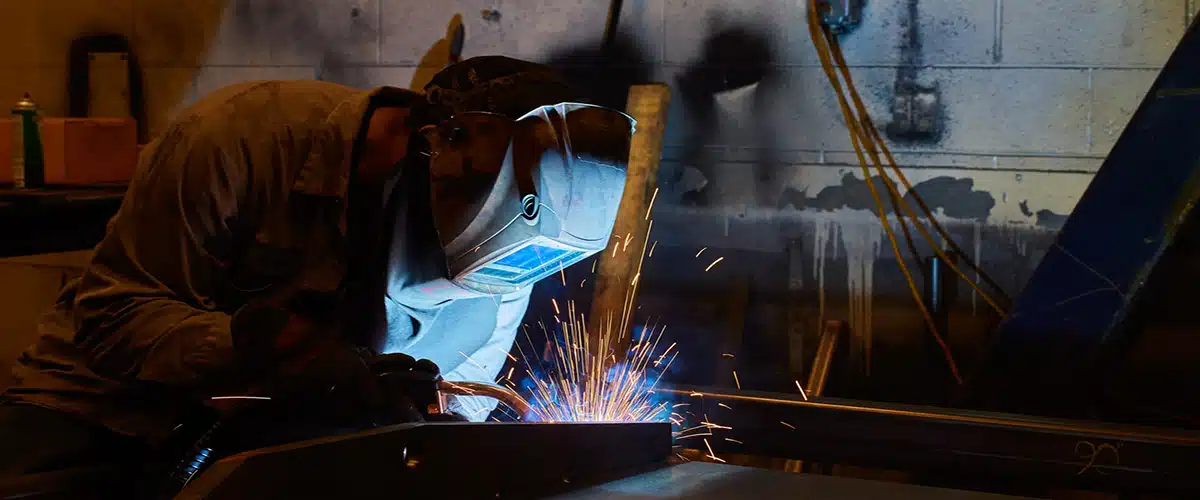
Colorado Workers’ Comp for Work-Related Vision Loss & Blindness
Learn about your rights after an eye injury at work that leads to vision loss or blindness and how to file a workers’ comp claim
Vision loss is one of the most devastating injuries Denver workers can experience on the job. Whether caused by a sudden traumatic accident, prolonged exposure to harmful conditions, or inadequate safety measures, damage to your eyesight can significantly impact your quality of life and your ability to work.
Fortunately, if you’ve suffered an eye injury at work in Colorado that leads to vision loss or blindness, you may be entitled to workers’ compensation benefits. These benefits can cover medical expenses, lost wages, and other costs associated with your recovery.
In this article, we’ll break down the types of eye injuries typically covered by workers’ comp, the benefits you may be eligible to receive, and how to file a workers’ comp claim in Colorado.
If you have questions or want help with the claims process to ensure you’re getting the full benefits you’re owed, reach out to the experienced Denver work injury attorneys at The Babcock Law Firm for a free consultation. We’re here to support and empower you to get the compensation you deserve.
What jobs put workers at risk of vision loss?
Certain occupations are at a significantly higher risk of eye injuries and vision loss due to hazardous work environments, frequent exposure to harmful substances, or reliance on dangerous equipment.
According to the Bureau of Labor Statistics (BLS), there were 18,510 eye-related injuries and illnesses reported in 2020 among U.S. workers that led to at least 1 day away from work. Nearly 60% of these injuries were caused by foreign objects like dust or debris entering the eye, while 35% resulted from objects striking the eye.
Industries and occupations most at risk of eye injuries include:
- Construction trades. With over 2,100 reported cases in a single year, construction workers experience some of the highest rates of eye injuries due to flying debris, dust, and sparks from tasks like welding and grinding.
- Manufacturing and industrial workers. Frequent handling of chemicals, operating heavy machinery, and working with molten materials or hot substances make this field particularly risky for burns and chemical injuries to the eye.
- Material moving workers. These workers face risks from flying particles, falling objects, and equipment-related accidents, as evidenced by the 1,860 reported injuries in 2020 alone.
- Building cleaning and pest control workers. There were 1,570 reported cases of workers who encountered eye hazards from chemical cleaners, pesticides, and exposure to dust and debris.
- Installation, maintenance, and repair occupations. With 1,480 cases reported, these workers encounter eye hazards from tools, sparks, and hazardous substances during repairs and installations.
- Health care professionals. Accidental splashes of bodily fluids, chemical spills, and glass breakage can lead to eye injuries for doctors, nurses, lab technicians, and other health care workers.
- Agricultural and landscaping workers. Hazards for farmworkers and landscapers include pesticides, fertilizers, flying debris from equipment, and prolonged UV exposure.
- Welders and electricians. The intense light from welding arcs and sparks can cause severe retinal burns while flying debris adds to the risk of serious eye injuries for these workers.
These statistics highlight the critical need for protective eyewear and adherence to workplace safety protocols. By prioritizing eye protection and safety measures, workers and employers can help prevent many of these avoidable injuries.
What types of work-related injuries cause vision loss and blindness?
Work-related injuries that cause loss of eyesight typically result from physical trauma, exposure to hazardous substances, or prolonged strain. Below are some of the most common eye injuries workers experience that lead to vision problems:
- Blunt trauma. Direct hits to the eye from tools, machinery, or debris can cause severe eye damage, including retinal detachment or rupturing of the eye.
- Penetrating injuries. If not treated immediately, sharp objects like nails, metal shards, or glass can puncture the eye and lead to significant vision loss.
- Chemical burns. Contact with harmful chemicals at work, such as cleaning agents, solvents, or acids, can damage eye tissue, leading to scarring or permanent vision impairment.
- Radiation exposure. Prolonged exposure to UV rays (often in outdoor jobs) or intense light sources like lasers or welding arcs can lead to cataracts or macular degeneration over time.
- Thermal burns. High temperatures near open flames or molten metal can cause burns to the eyes and eyelids and cause severe tissue damage and scarring.
- Infections and contaminants. Exposure to infectious diseases or contaminated materials can lead to severe eye infections that may cause lasting damage if not treated quickly.
- Eye strain and digital eye strain. Prolonged screen time without breaks can lead to symptoms that, over time, increase the risk of chronic vision issues such as myopia and retinal strain.
If you’ve experienced any of these eye injuries on the job, it’s crucial to seek immediate medical care from an employer-approved physician to ensure you don’t lose your right to seek workers’ comp benefits.
What happens if an employee loses an eye during work in CO?
In Colorado, employees who lose an eye or suffer any other eye-related injury at work can apply for workers’ compensation benefits to cover things like medical costs and lost income associated with the injury.
Workers’ compensation is a type of no-fault insurance that most Colorado employers are required to provide for their employees. To be eligible for benefits, you must be an employee (not an independent contractor), and you must be able to prove that your injury is a direct result of your job duties or work environment.
It’s also important to know that workers are typically entitled to benefits even if they were responsible for the accident that led to their injury, as long as it wasn’t intentional or the result of intoxication or drug use at work.
What percent of vision loss qualifies for disability?
Colorado workers with significant vision loss due to workplace injuries may qualify for specific disability benefits under workers’ comp, depending on the extent of the impairment.
For eye injuries that result in a temporary inability to work, workers are entitled to temporary disability benefits that provide payments for lost wages (typically two-thirds) if they’re unable to work or can only work in a reduced capacity during their recoveries.
For permanent partial vision loss, employees may be eligible for permanent partial disability (PPD) benefits, with compensation based on the degree of vision loss. For example, if a worker loses complete sight in one eye, they’re entitled to receive PPD benefits for 104 weeks.
In cases of more severe impairment resulting in a catastrophic injury, such as blindness in both eyes, workers may qualify for permanent total disability (PTD) benefits. PTD is a lifetime benefit in Colorado, provided when a worker is fully and permanently unable to return to any form of employment. These benefits continue for the worker’s lifetime, ensuring long-term financial support without time restrictions.
Lump Sum Payments of Permanent Disability Benefits
Learn about the pros and cons of lump sum payments for workers’ comp after a permanent work injury.
What other benefits can I get from workers’ comp for vision loss in CO?
In addition to wage replacement and disability benefits, workers may also be eligible for these types of Colorado workers’ comp benefits:
- Medical benefits. Coverage for all necessary treatments related to vision loss, such as surgeries, medications, and long-term care.
- Vocational rehabilitation. Support for job training or placement if your vision loss limits your ability to perform your prior work.
These benefits are intended to help workers and their families manage medical, vocational, and financial challenges following a severe work-related injury.
How do I file for workers’ comp for vision loss in Colorado?
To file a workers’ compensation claim after an eye injury in Colorado, you’ll need to take these steps to ensure you remain eligible for benefits:
- Report your injury. You have 10 working days to report the injury in writing to your employer.
- Seek medical care. Choose a medical provider from your employer’s approved list. Be sure to tell them the injury occurred at work, and follow all prescribed treatments.
- File a claim. Your employer must report your injury to their insurance company within 10 days to start the claims process. However, you also need to file form WC 15, “Worker’s Claim for Compensation,” with the Colorado Division of Workers’ Compensation within 2 years, but this should be done as soon as possible.
- The insurer reviews the claim. The company has 20 days to accept or deny the claim. If denied, you have the right to file a workers’ comp appeal, but it’s highly recommended that you hire a local Denver workers’ compensation attorney to help you with the process to increase your chance of success.
Remember, accurate reporting and timely medical care and treatment are crucial for securing the benefits you’re entitled to.
Suffering from work-related vision loss in Colorado? We can help!
If you’ve experienced partial or complete vision loss due to a workplace injury, the stakes couldn’t be higher. Vision loss can significantly impact your ability to work, your quality of life, and your future financial security, making it essential to have your workers’ compensation benefits accurately calculated to account for the lifelong challenges you may face.
Unfortunately, insurance companies often attempt to minimize payouts by offering lowball workers’ comp settlements, especially for workers who don’t have legal representation.
That’s where The Babcock Law Firm comes in. Our knowledgeable Denver workers’ compensation lawyers understand the devastating effects of vision loss and are dedicated to ensuring you receive the maximum compensation you’re entitled to. We’ll handle the complexities of your case, from calculating fair benefits to negotiating with insurance companies, and even take your case to court if necessary. Let us fight for your rights while you focus on adjusting to life after your injury.
Contact The Babcock Law Firm today for a free consultation and let us help you secure the support you deserve.
References
Bureau of Labor Statistics. (2023, March 31). Workers suffered 18,510 eye-related injuries and illnesses in 2020 : The Economics Daily: U.S. Bureau of Labor Statistics. www.bls.gov. https://www.bls.gov/opub/ted/2023/workers-suffered-18510-eye-related-injuries-and-illnesses-in-2020.htm
Colorado Department of Labor and Employment. (n.d.). Division of Workers’ Compensation Quick Reference Guide. https://cdle.colorado.gov/sites/cdle/files/Quick_Reference_Guide_2020.pdf


